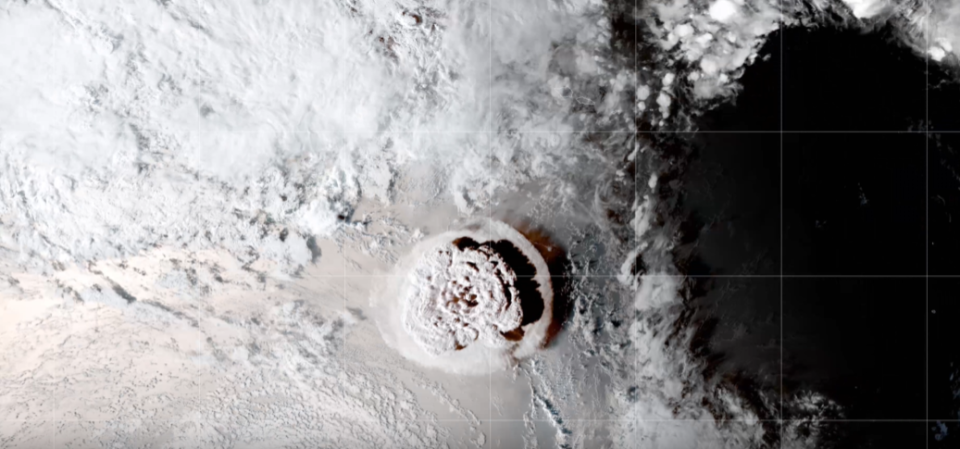On January 15, 2022, the world witnessed the most famous volcanic eruption at Hunga Tonga–Hunga Haʻapai, a volcano located in the southern Pacific Ocean, about 65 kilometers north of Tongatapu, the main island of Tonga.
This eruption, the largest since 1883, caused a series of extraordinary events, including a tsunami that reached Japan and America and shot an incredible amount of water into the Earth’s stratosphere – enough to fill the size of the Olympic 58,000. swimming pools.
“We’ve never seen anything like this,” said Luis Millán, an astrophysicist at NASA’s Jet Propulsion Laboratory in Southern California who led a study of the volcano’s water vapor, in August 2002.
The great power of the explosion also broke several lightning records, written in a new paper that appears in the journal Geophysical Letters.

This Jan. 16, 2022, photo shows ash from the Hunga Tonga-Hunga Ha’apai eruption that occurred the day before. An astronaut took the photo from the International Space Station. (Photo and text: NASA)
Incomparable length
The eruption produced a plume of ash 40 km higher than normal thunderstorms, making it the perfect environment for high-altitude lightning. The researchers recorded that the lightning flash was higher than the thunder flash.
Lightning was recorded at high altitudes, ranging from 19 to 28 km, where the atmosphere is too low to support thunderstorms.
The authors of the study believe that the high-energy storm may have created a high-speed, high-speed atmosphere, causing the lightning to explode at high speeds.

NASA satellites captured the eruption on January 15, 2022. (NASA)
The heat of the lightning was not seen
At its peak, the eruption produced 2,615 lightning bolts per minute, lasting about five minutes. This replaces the previous record set in 1999, when 993 flashes per minute occurred in the southern United States.
Interesting “lightning holes”
After the eruption, the ash grew rapidly outside the surrounding waves, called gravity waves. These waves caused the formation of donut-shaped rings of lightning that traveled along their streaks, some of which were 280 kilometers in diameter.
“The size of these lightning rings made us think,” said Dr. Alexa Van Eaton, a volcanologist at the United States Geological Survey, in her statement.
“We’ve never seen anything like it before, nothing like a meteorological storm. Single lightning rings have been seen, but not multiples, and they’re small in comparison.”
A special sight
A team of researchers, led by the United States Geological Survey, used high-tech sensors that measure light and radio waves to map the eruption. This type of volcano, phreatoplinian, occurs only when magma erupts in water.
This is the first time that scientists have had the opportunity to observe and measure the phreatoplinian explosion using modern technology.
“It was like digging up a dinosaur and seeing it walk on four legs. It takes your breath away,” Van Eaton said.
“These results show a new tool we need to monitor volcanic eruptions at the speed of light and help inform dangerous ash advisories for aviation.”
RELATED: Lightning shoots from Philippine mountains
Click here to watch the video
Header photo: View from the top of Tonga – Hunga Ha’apai in June 2017. (Damien Grouille/Wikipedia) CC BY-SA
#Powerful #volcanic #eruptions #unprecedented #events

